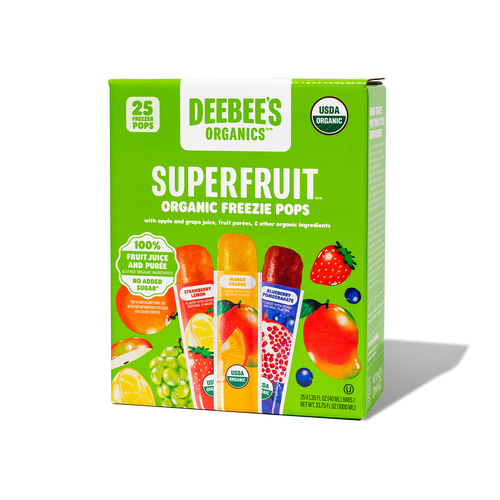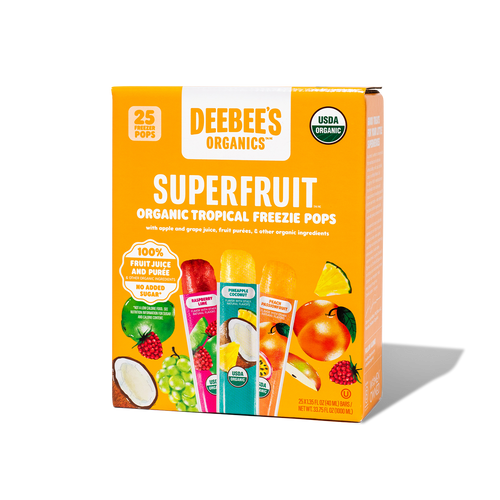We’ve heard it before: food is fuel
Whether they're running around the soccer field, flipping at gymnastics, or just playing hard at recess, active kids need healthier sports snacks that provide energy without the sugar crashes or unnecessary ingredients. Here are some helpful parent-approved snacking and hydration tips to keep them going strong.
1. Hydrate with Natural Electrolytes
Staying hydrated is key for any young athlete, but most sports drinks are packed with artificial colors, flavors, and refined sugars. Instead, we recommend trying these natural ways to replenish electrolytes and keep them energized:
- Coconut Water: Packed with potassium and a little sodium, this is nature’s version of a sports drink.
- Fruits High in Water: According to medical experts, the most hydrating fruits are watermelon, strawberry, and peach; and the most hydrating vegetables are cucumber, tomato, and celery.
- Citrus Fruits: Oranges, lemons, and limes are refreshing and naturally full of electrolytes.
- DIY Electrolyte Drink: Mix water with a pinch of sea salt and a splash of 100% fruit juice or a SuperFruit Freezie for an easy naturally sweetened dye-free sports drink.
Hydration is just as important as the snacks they eat, so keep their water bottles full and encourage regular sips between activities. Our organic freezie pops are a fun way for kids to get more liquids in, especially on hot summer days. Try packing frozen pops in a cooler or try the insulated bottle hack with ice to keep them frozen for hours.
2. Grab Easy-to-Pack Snacks for Busy Days
Parents know the struggle of packing snacks that won’t get crushed in a backpack or turn into a sticky mess in the car. Here are some great grab-and-go options:
- Portable Fresh Fruit: Bananas, apples, grapes - nature’s fast food! We all know that fruits provide our bodies with powerful antioxidants, and the easier the fruit is to pack the more likely you’ll grab it on the go.
- Nuts & Seeds: A handful of almonds or sunflower seeds gives long-lasting energy. Learn more about the benefits of snacking on seeds and how to include more seeds in your diet!
- Cheese Sticks: Individually wrapped, mess-free, and packed with protein. It’s clear why these are such a popular snack for kids!
- DeeBee’s Organics SuperFruit Freezies: No added sugar, no artificial ingredients, and they’re way less messy than a popsicle. They’re also free from the top 9 allergens making them a safe snacking option for the team.
- Applesauce pouches: Skip the cups and opt for portable applesauce pouches like GoGo Squeez for mess-free snacking on the go, with no spoon required.
3. Timing Matters: When and What to Feed Active Kids
The right snack at the right time can make all the difference in your kid’s performance and recovery. The Nationwide Children’s Hospital recommends fueling with carbohydrates and recovering with protein. Here’s a simple guide to fueling them before and after any sports activity.
Pre-Game Snacks: Energize Without Weighing Them Down
Give them a balanced carbohydrate-based snack about 1-2 hours before activity so they have energy to play hard without feeling sluggish. Stick to easy-to-digest carbs without tons of refined sugars to help keep their muscles energized and brain focused on the game. We recommend:
- Apple or orange slices
- Banana with a nut or seed butter
- Whole-grain crackers or pretzels
- Dried fruit paired with string cheese
- Cucumber slices with hummus
Post-Game Snacks: Refuel & Recover
After all that movement, their bodies need both carbs to replace energy and protein to support muscle recovery. Try to give them something nutritious within 30-60 minutes post-activity. We recommend:
- Turkey and cheese wrap
- Greek yogurt with honey and berries
- Nuts or seeds
- Hard-boiled eggs with hummus
- Cheese cubes with fruit
4. Ditch the Junk: Ingredients to Watch Out For
Lots of sports snacks are packed with ingredients kids don’t need. Here’s what to avoid:
- Artificial Colors & Food Dyes: Artificial food dyes are petroleum or crude-oil based chemical substances that are made in a lab that contain no nutritional value, learn more about why we avoid them in our products.
- Artificial Flavors: Artificial flavors are typically created by scientists in a lab and can contain preservatives, solvents, emulsifiers, and other additives. While natural flavors are also created by scientists, they are derived from substances and flavors found in nature – learn how to spot the difference between artificial, natural, and organic flavors.
- Preservatives: Like BHA & BHT, which have been flagged for potential health risks.
- Refined Sugars: Like high fructose corn syrup, which leads to quick energy crashes.
5. Keep It Simple: Snack Prep Tips for Parents
A little planning goes a long way in keeping your young athlete fueled and happy. Try these tips:
- Prep snacks ahead of time: Wash and portion out fruit, pack trail mix, and freeze freezies the day before so they’re ready to grab and go.
- Stock the essentials: Keep your pantry filled with easy, whole-food snacks.
- Use good storage: Insulated lunch bags, reusable containers, and ice packs help keep things fresh.
The Bottom Line: Snack Smarter, Not Harder!
Fueling your little athlete doesn’t have to be complicated or full of weird ingredients you can’t pronounce. Stick with whole, nutrient-dense foods, keep hydration in check, and pack snacks that work for your busy schedule. And if you’re looking for a mess-free, on-the-go treat that kids love, our SuperFruit Freezies or Non-Dairy Gelato Pops are always a win!




